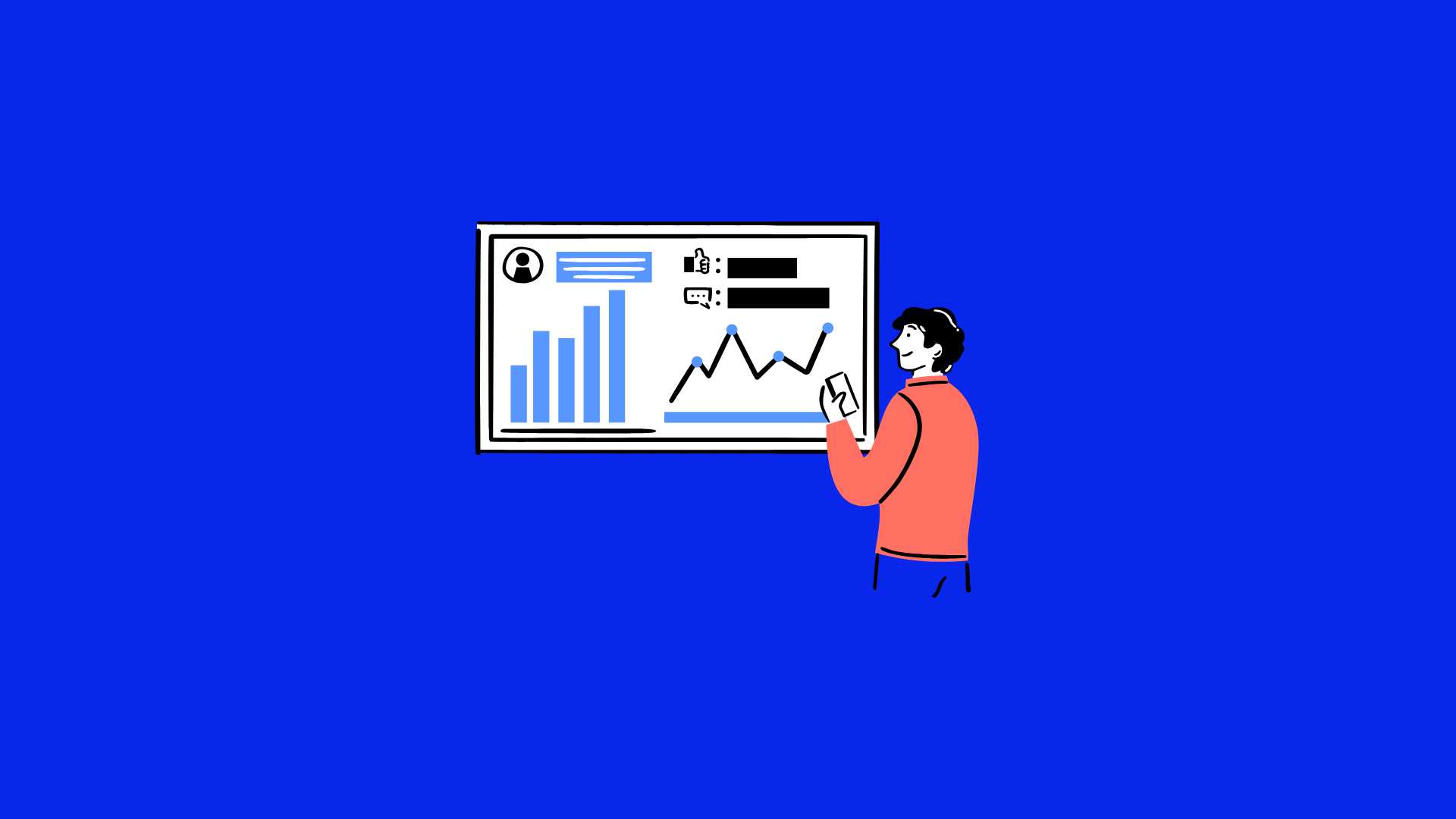In the vast and often overwhelming landscape of digital marketing, the performance of a landing page stands as a critical barometer of success.
From driving conversions to capturing leads, these single-focus pages are designed for action.
Yet, navigating the abundance of available metrics—from bounce rates and time on page to click-through rates and scroll depth—can often lead to more confusion than clarity.
Amidst this data deluge, a pivotal question emerges for business leaders and digital growth professionals:
Is there one landing page metric that truly tells you more about your landing page’s effectiveness than any other, offering a deeper, more actionable insight into its performance?
This article compiles expert perspectives from those at the forefront of digital growth, revealing the singular metric they believe cuts through the noise, providing the clearest indication of whether your landing page is genuinely delivering on its promise.Read on!
Conversion Rate: The Ultimate Landing Page Scorecard
A key metric that reveals more about your landing page performance than any other is the conversion rate.
It’s the ultimate scorecard showing how well your page convinces visitors to take action. Sure, traffic volume matters, but without conversions, all those clicks are just noise. Imagine throwing a party where lots of people show up but nobody stays to dance, that’s traffic without conversion.
Tracking conversion rate helps pinpoint whether your message hits home or misses the mark. It reveals if your call-to-action is strong or if visitors leave confused.
While bounce rate and time-on-page offer clues, conversion rate directly ties to your goals. Focus on improving it, and you’ll see a real impact on your ROI.
After all, numbers don’t lie, if visitors aren’t converting, your landing page isn’t pulling its weight. So, keep an eye on conversions; they’re the heartbeat of landing page success.

SEO Manager, Nine Peaks Media
Scroll Depth Reveals Hidden Landing Page Friction
The one metric that tells me more about landing page performance than anything else is scroll depth combined with time on page.
We ran a test on two different versions of a termite treatment landing page, with the same CTA, same design, but different content order.
One had the service overview and pricing near the top, while the other buried it below testimonials and FAQ. In the second version, users scrolled less than 40% of the page and spent under 30 seconds. That told us they weren’t just bouncing, they were giving up before hitting the pitch.
We flipped the order, placing the essentials at the top, and immediately saw both scroll depth and conversions rise. It taught me that traditional bounce rates or even CTA click rates can be misleading.
However, scrolling and time reveal intent and friction. If people stop cold halfway through, you’ve either lost their trust or wasted their attention. Fix that, and the rest follows.

Founder, What Kind Of Bug Is This
Conversion Rate Directly Measures Landing Page Success
The conversion rate is a key metric for evaluating landing page performance, reflecting the percentage of visitors taking desired actions like purchases or sign-ups.
Analyzing conversion rates provides insights into how well landing pages engage visitors and prompt them to act. It directly indicates the page’s effectiveness, with high rates suggesting that content and design resonate with the audience, enabling businesses to optimize their marketing strategies.

Business Development Manager, Olavivo
Time to Conversion Outperforms All Other Metrics
Time to conversion beats everything else for understanding landing page effectiveness.
We track how long visitors spend before taking action, not just bounce rates or clicks. Pages with 2-3 minute engagement times convert 300% better than those with 30-second visits. This metric reveals whether your content actually persuades or just attracts curious browsers.
Most businesses obsess over traffic volume while missing conversion quality signals.

CEO, Humble Help
Conversion Rate Tells If Pages Pull Weight
For us, conversion rate beats every other metric when judging a landing page’s performance.
It tells you straight up if the page is doing its job like turning visitors into leads, signups, or customers.
You can have great traffic and a low bounce rate, but if no one’s taking action, the page isn’t pulling its weight.
We always track conversion alongside micro-metrics like scroll depth or button clicks, but if you could only look at one thing, conversion gives you the clearest picture. It forces you to focus on the offer, the clarity of the message, and how frictionless the experience really is.

Founder & CEO, PRLab
Scroll Depth Uncovers What Users Actually Value
If there is one metric we rely on most to judge a landing page’s real performance, it’s scroll depth paired with time on page.
Bounce rate and conversions give a surface-level view, but this combo reveals how people actually engage with the content.
We noticed on one of our high-traffic pages that users were dropping off right around a key pricing section. Conversion looked fine, but scroll behavior told a different story. Turns out, the messaging there wasn’t clicking. We reworked that section simplified the copy, added a visual cue and saw a solid lift in engagement and sign-ups.
Tracking how far users scroll, and how long they linger at each section, gives us a clearer signal of what’s working and what’s not before they ever hit a CTA.

Head of Marketing & People Ops, WeblineIndia
Conversion Rate Measures True Landing Page Effectiveness
One key metric that reveals more about your landing page performance than any other is the conversion rate.
It directly measures how effective your page is at persuading visitors to take desired actions, whether it’s signing up, making a purchase, or downloading a resource.
A high conversion rate signifies that your page resonates with your audience and successfully drives engagement, while a low rate highlights areas for improvement.
By analyzing conversion rate data, you can identify what works and what doesn’t on your landing page. Optimize elements like headlines, calls-to-action, and images to align with your audience’s needs.
Continuous tracking and A/B testing ensure your page evolves to meet user preferences, ultimately maximizing its performance.

President of Acquisitions, Wake County Home Buyers
Scroll Depth Reveals What Motivates Your Audience
After conversion rate, which is obviously #1, the #2 metric I like to look at when assessing landing page performance is scroll depth, or the extent to which users scroll down the page. If users are deeply engaged with your copy, or highly motivated by your offer, they’ll typically learn about it before they take action.
By seeing how far your users scroll, as well as how much time they spend on each page section, you can gain additional insight into what parts of your marketing message connect the most effectively with your target audience. This data can be great for creating new ad creatives.

Marketing Director, Prime Ship
Conversion Rate: The Truth Serum of Funnels
If I had to choose one metric that tells me the most about a landing page’s performance, its conversion rate.
At the end of the day, everything comes down to whether people are taking the action you want them to take. You can look at bounce rate, time on page, or even scroll depth, and while those give you signals about engagement or interest, none of them matter if the visitor isn’t converting.
In my experience, when we focused too heavily on surface-level metrics, it was easy to miss the bigger picture.
Conversion rate forces you to think holistically. It’s not just about whether the page design is clean or the messaging is clear. It’s about alignment from your traffic source to your call-to-action. Does the ad or email that brought them here set the right expectation? Does your value proposition on the page remove doubt? Does your form or purchase process make it frictionless?
When I work with companies on digital strategy, I often tell them that conversion rate is the truth serum of your funnel. If it’s low, something upstream or on the page itself isn’t resonating. Fix that, and you’ll unlock sustainable growth.

Senior Vice President, EcoATMB2B
On behalf of the BoostMyDomain community of readers, we thank these leaders and experts for taking the time to share valuable insights that stem from years of experience and in-depth expertise in their respective niches.
BoostMyDomain invites you to share your insights and contribute to our authoritative publication. Reach a wider audience, build your credibility, and establish yourself as a thought leader in an industry that caters to every business with an online presence!
